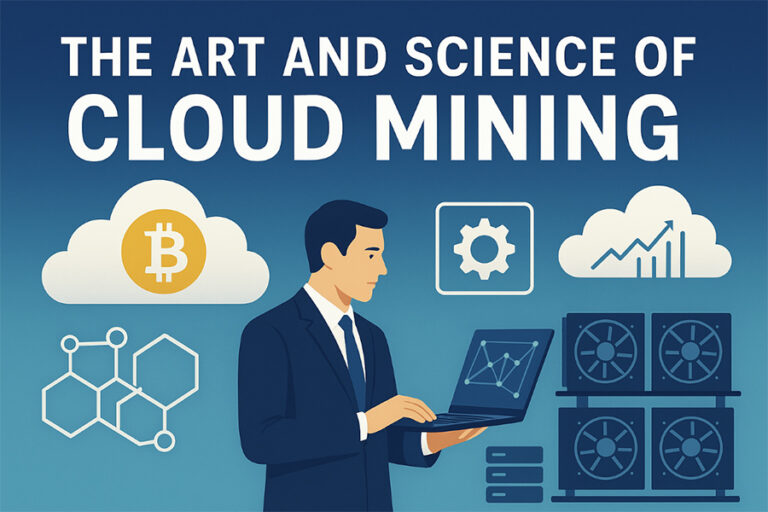In today’s digital economy, cryptocurrencies have evolved from niche assets into mainstream financial instruments. Among the many ways to acquire crypto, cloud mining has emerged as a fascinating blend of art and science—an approach that makes mining accessible to almost anyone without the need for technical expertise or expensive hardware. Understanding how it works and the balance between its opportunities and risks can help both investors and tech enthusiasts make smarter decisions in the digital mining landscape.
What Is Cloud Mining?
Cloud mining allows individuals to participate in cryptocurrency mining without owning or managing physical mining equipment. Instead, users rent computing power, often called “hash power”, from a remote data center operated by a service provider. The provider handles hardware setup, electricity, cooling, and maintenance, while the customer earns a share of the mined cryptocurrency based on the amount of hash power purchased.
This model eliminates the barriers of traditional mining, which requires costly ASIC machines, large electricity consumption, and constant maintenance. With cloud mining, users can start mining Bitcoin, Ethereum, or other coins with just an internet connection and a contract purchase.
The Science Behind Cloud Mining
At its core, cloud mining operates on the mathematical principles of blockchain consensus mechanisms, primarily Proof of Work (PoW). In PoW mining, miners compete to solve complex cryptographic puzzles to validate transactions and secure the blockchain network. The process demands high computational power, which is where cloud mining data centers excel.
These data centers often house thousands of high-performance mining rigs operating simultaneously. Advanced algorithms distribute tasks across machines, optimizing energy use and ensuring continuous uptime. Cloud mining companies leverage economies of scalebulk hardware purchasing, cheap electricity rates, and optimized cooling systems, to maximize profitability and efficiency.
The mining rewards, typically in Bitcoin or another cryptocurrency, are then distributed to users based on their contracted share of computing power. While this process is entirely scientific and technology-driven, there’s also an art to it—especially in timing, strategy, and provider selection.
The Art of Cloud Mining
The “art” of cloud mining lies in strategic decision-making. Investors must evaluate which cryptocurrency to mine, which provider to trust, and when to enter or exit the market. Cryptocurrency prices are highly volatile, meaning that the profitability of mining can fluctuate drastically based on market conditions, block rewards, and network difficulty.
Successful cloud miners often study market trends, mining difficulty charts, and energy price fluctuations before committing to a plan. They diversify their investments across multiple cryptocurrencies or platforms to spread risk. Choosing the right provider is another art form—investors must assess transparency, data center location, contract terms, payout frequency, and historical performance.
Many fraudulent platforms pose as legitimate cloud mining services, promising high returns but disappearing with investors’ funds. Therefore, due diligence, community feedback, and independent audits are crucial before investing.
Advantages:
Accessibility: No need for hardware or technical knowledge.
Scalability: Users can easily increase or decrease mining power.
Convenience: The provider handles all operational logistics.
Disadvantages:
Risk of Scams: The cloud mining industry has seen numerous fraudulent schemes.
Lack of Control: Users depend on the provider for transparency and maintenance.
Market Volatility: Returns can drop if crypto prices fall or mining difficulty rises.
With the growing adoption of renewable energy and the rise of green mining initiatives, the future of cloud mining looks promising. Some providers now use solar, hydro, or wind power to reduce environmental impact, while others integrate AI-based optimization to improve performance and profitability.
As blockchain technology evolves, cloud mining may become even more decentralized and transparent, potentially using smart contracts to automate payouts and eliminate fraud.
The art and science of cloud mining lie in the perfect balance between technology and strategy. It’s a field where data centers and cryptography meet human judgment and timing. For those who approach it wisely, cloud mining offers a gateway into the world of digital assets, blending innovation, opportunity, and a touch of risk into a truly modern form of wealth creation.
Contributed by GuestPosts.biz


